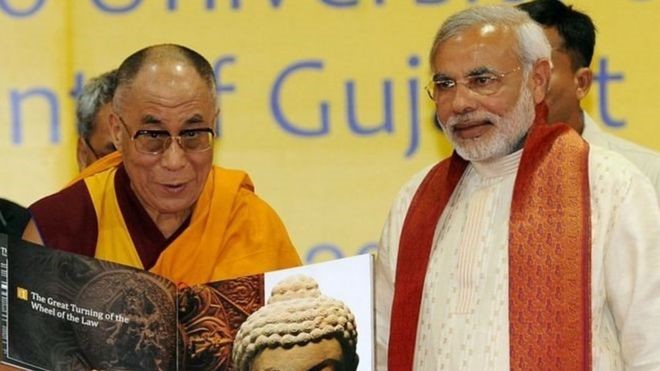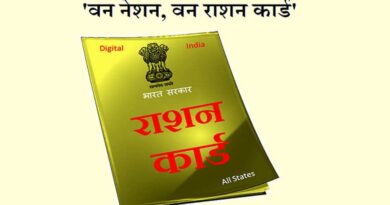Indo-China border dispute: Ram Madhav involved in funeral of Tibetan soldier, signs of change in Tibet policy?
The situation remains tense on the Indo-China border from Ladakh from 29-30 August. On Monday, there was a bullet after 45 years. Both countries are claiming that the first shot was not fired by their army. Amidst all this, a move by the national general secretary of the Bharatiya Janata Party has drawn attention to the Tibet policy of India.
On 30 August, Nima Tenzin, the company leader of India’s ‘Special Frontier Force’ (SFF), was killed in the area along the southern bank of Pangong Lake in Ladakh.
His funeral was attended by Bharatiya Janata Party National General Secretary Ram Madhav on Monday. Ram Madhav has come to BJP from RSS and his interest in Jammu and Kashmir is not hidden from anyone. But Tibet and Vikas SFF, called in the Vikas Regiment, is a very complex issue.
India considers Tibet as a part of China and no official statement about the development regiment ever appears. In such a situation, the implications of the presence of a senior leader of the ruling party of India in the funeral of a Tibetan soldier are being found.
Just a message or message?
Was Ram Madhav’s arrival at Nima Tenzin’s funeral a mere coincidence or a small message towards a major policy change?
Ram Madhav also tweeted after the funeral but deleted it later.
In his deleted tweet, he wrote that ‘SFF soldier attended the funeral of Neema Tenzin. He was one such Tibetan soldier who sacrificed his life in the security of the Ladakh border. This sacrifice will bring peace to the Indo-Tibetan border region, this will be a true tribute to him.
Every word of this tweet is being discussed. Ram Madhav described the soldier as ‘Tibetan’ and then used the term ‘Indo-Tibet border’. India does not give any official recognition about the development regiment and at the same time calls its northern border the Indo-China border and not the Indo-Tibet border.
But is this really a sign of any policy change? Ram Madhav has not said anything about the reason for deleting the tweet.
Tibet, China and India
To understand the whole matter, it is important to know that after the Chinese came under occupation, the Dalai Lama, the leader of Tibet, had to flee to India, after which a large population of Tibetans came to the north-east of India, Delhi, Himachal and many others. The area is inhabited.
After the Chinese occupation of Tibet, the people who arrived in India and their next generations have been admitted in the development regiment. After the Indo-China war of 1962, this regiment was formed by General Sujan Singh Uban. At that time, only Tibetan youth were involved. This regiment also participated in the Battle of Bangladesh in 1971 with the Indian Army. Currently, in addition to Tibetans in this regiment, soldiers of Gorkha community are also admitted.
Ram Madhav participated in the last visit of a soldier of this regiment.
India’s stance on Tibet remained different for years, but later in 2003 India considered Tibet as part of China. Then Prime Minister of India was Atal Bihari Vajpayee.
Sudhindra Kulkarni has been an advisor to former Prime Minister Atal Bihari Vajpayee. They believe that the consequences of playing the Tibet card can be very serious.
Is there any indication in the presence of Ram Madhav?
To this he replied, “The whole country is saddened by the martyrdom of any army jawan. But the jawan was Tibetan, we want to give such a hint to the other side, if we want to play the Tibet card, the consequences can be very serious.” . “
Sudhindra Kulkarni further says that in his tweet in Ram Madhav, he mentioned the Indo-Tibet border. This means that the Indian government thinks that we have no border with China, but rather border with Tibet. It also means that Tibet believes that India is an independent nation. It is also not in India’s interest to give such a hint.
When India has agreed in 2003 that China is part of Tibet, then if the ruling party representatives will tweet in 2020, it is certainly a sign that the Indian government is beginning to have a different opinion from its official stand.
The same thing that was indicated by Sudhindra Kulkarni ‘Tibet Card’ was also printed in the Global Times.
Chinese newspaper connects Tibet to Northeast
On September 3, the Chinese government newspaper Global Times published an article on the Special Frontier Force, titled, “India may have to bear the brunt of playing the Tibetan card.”
On the night of 29-30 August, the skirmishes on the Indo-China border on the southern bank of Pangong Lake, the role of Special Frontier Force soldiers was important. Many such news were published in Indian media. The Global Times report was based on this.
It has been mentioned in the article that India is using Tibetans, discontent towards China, against China. In the report, an expert was quoted as saying that if India supports Tibet on border issues, then China can also support the rebels in Northeast India.
China’s latest statement on Arunachal Pradesh also indicates that if India plays the Tibet card, then China can play the card of North-East India. Sudhindra Kulkarni also agrees with this assessment.
China on Monday responded strongly to the question of Union Minister Kiren Rijiju in the alleged abduction of five Indians by the Chinese army from the border in Arunachal Pradesh. China said that it does not consider Arunachal a part of India, rather it is the territory of southern Tibet of China.
What is the problem with playing the Tibet card?
According to experts who keep an eye on India-China relations, there are many such flash-points in the border of both countries, which are not in favor of both India and China at this time.
BR Deepak, Professor of the Center for Chinese and South East Asia Studies at JNU, is similarly knowledgeable. He is also the chairman of this center.
He believes that India is playing the Tibet card in all the gestures and China will not accept it.
This can have consequences not only on the Indo-China Ladakh border but also on the relations between Kashmir, Sikkim, the state of North East India and India’s small neighboring countries.
India shares a 3,488 km border with China. This border passes through Jammu and Kashmir, Himachal Pradesh, Uttarakhand, Sikkim and Arunachal Pradesh. It is divided into three sectors – Western Sector ie Jammu and Kashmir, Middle Sector ie Himachal Pradesh and Uttarakhand and Eastern Sector ie Sikkim and Arunachal Pradesh.
In fact, when India considered Tibet as part of China in 2003, India’s move was seen as such that China too has accepted Sikkim as part of India. This was seen as a compromise between one hand and one hand.
Dilemma of india
Professor BR Deepak says that this is the reason why India has been avoiding calling Tibet a disputed area.
If India changes its stand on Tibet, China can change its stand on Sikkim, which will give rise to a new controversy. There have been many such articles published in Chinese newspapers in recent times that China has made a mistake by recognizing Sikkim.
Professor Deepak feels that now India does not want to keep the development regiment hidden. Perhaps this is why the media has got the complete coverage of this regiment.
All these things also show the resentment of India amidst border tension and also indicate that India may be rethinking its Tibet policy.
However, he believes that these are not the first signs of a change in Indian policy on Tibet.
Professor Deepak says that a hint was also found at the 2014 swearing-in ceremony of the Prime Minister, when he sent an invitation to the Prime Minister of the Tibetan exiled government to attend his swearing-in ceremony. China had lodged its protest at that time also.
However, in 2019, Narendra Modi did not do this.
Trouble in the north-eastern states
Professor Deepak adds together that if this takes the form of a policy change, there could be a lot of upheaval in the north-east region of India, “More than 30 rebel groups are active in the northeast of India. Many of them There are groups from which it is believed that China supports them. So far all these insurgent activities have been conducted in a very intelligence manner. But if India changes its stand on Tibet, then China may also openly Get down in support of such groups. From Arunachal to Assam and Manipur, the opposite can happen.
Professor Deepak says that there are many similarities between the PLA and the PLA, which have been banned by the Indian government in Manipur. Those similarities can be seen in carrying out operations from their flag. Not only will North East India have an explosive situation, it can also have an impact on their relations with the neighboring country and India. Along with Nepal, Bhutan, Bangladesh, Pakistan, India has also seen China’s proximity and its impact in recent times.
When India considered Tibet as part of China
The history of Tibet has been very turbulent. Sometimes it remained as a self-occupied territory, and sometimes the powerful dynasties of Mongolia and China ruled it.
But in the year 1950, China sent thousands of soldiers to wave their flag on this area. Some areas of Tibet were converted into autonomous areas and the remaining areas were merged into the Chinese provinces adjoining it.
In 1959, the Dalai Lama had to flee Tibet and seek refuge in India. On 31 March 1959, this religious leader of Tibet stepped into India.
On March 17, he left the Tibetan capital of Lhasa on foot and crossed the Himalayan mountains and entered the Indian border after 15 days.
During the visit, when there was no news of him and his colleagues, many people started to fear that he might have died.
Upon reaching India, he formed an exile government.
India’s attitude has been changing with respect to Tibet. In June of 2003, India officially agreed that Tibet is a part of China.
After the then Prime Minister Atal Bihari Vajpayee’s meeting with the then Chinese President Jiang Zemin, India considered Tibet for the first time.
Although then it was said that this recognition is indirect. Indian officials had said at that time that India has not recognized the whole of Tibet, which is a big part of China. Rather, India has recognized only the part that is considered to be an autonomous Tibet region.




